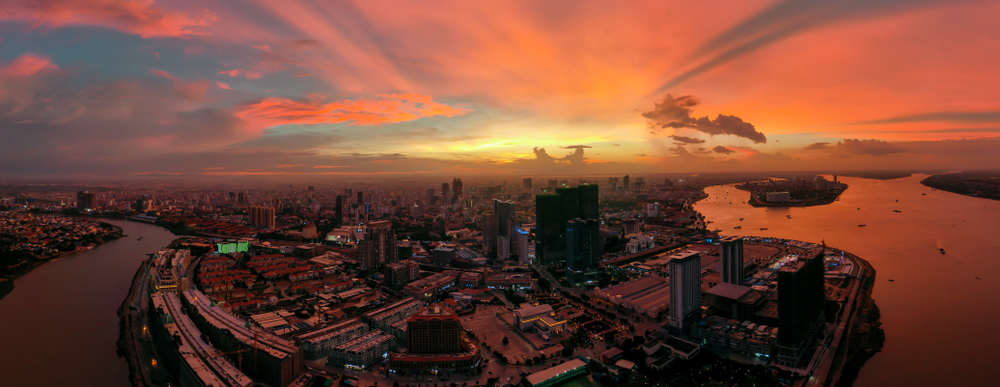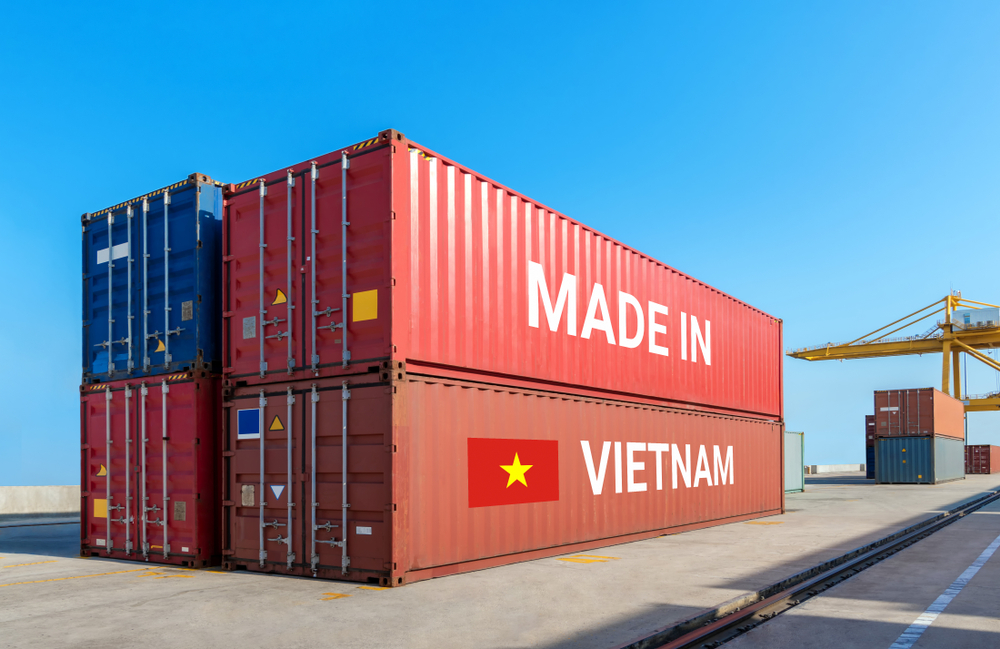Southeast Asia in recovery, shows promise for the real estate sector
Like the rest of the world, Southeast Asia has had a turbulent 2020. Nevertheless, constituent nations are emerging from the pandemic with their real estate sectors showing unmistakable signs of life

In Southeast Asia, life for the most part has returned to normal and economies are showing signs of improvement. But with still so much regional and global uncertainty, questions remain whether the region’s property markets have recovered from the worst of the crisis or whether they should brace for another bumpy year.
Southeast Asia’s bleakest months followed soon after China’s, with early cases popping up in Thailand and Vietnam, sparking fears the region would be next to endure the same high rate of infections. With travel bans and lockdowns being imposed around the world, tourism and investment in the region ground to a halt and the property industry went into freefall as developers changed plans, shuttered sales offices, and postponed launches.
By the end of the first quarter, Singapore’s hospitality assets practically disappeared and office investments plunged 81% from the previous quarter to S$183m ($129m), while the overall value of real estate investment tumbled 78% year-on-year to $432m, according to Real Capital Analytics. In Thailand, the condominium sector posted the lowest number of newly launched units in almost a decade, while similar grim scenarios played out in Malaysia, Indonesia, and the rest of Southeast Asia.
“It felt there wasn’t a light at the end of the tunnel,” says Desmond Lim, head of research for Singapore and Southeast Asia at CBRE.
Relief has since come in the form of government aid and policy changes.
The overall message is that the parachutes are up. There is a less negative outlook that could lead to a more positive outlook in the next six months
In Singapore, the government relaxed market conditions to allow developers to extend the completion time for projects, and in October extended its relief programme on mortgages and loans for individuals and small firms into next year.
In Thailand, the Land and Building Tax was slashed by 90%; in Vietnam, tax, and land rental payments have been deferred, and in Indonesia, a $725m stimulus package was announced in February to provide fiscal incentives for the country’s tourism, aviation, and property industries.
In Malaysia, the government launched an economic recovery plan exempting home buyers of stamp duty on loan agreements for the purchase of residential homes priced between MYR300,000 and MYR2.5m.
“The overall message is that the parachutes are up. There is a less negative outlook that could lead to a more positive outlook in the next six months,” says Lim.
An encouraging sign that a positive outlook may follow is China’s rapid economic recovery from the pandemic as western economies remain battered.
China’s economy grew 4.9% year-on-year in the third quarter, only a few months after the virus was first detected, cities were locked down, and factories nationwide were closed.
“We started to see a pickup in activity towards the end of April, and we may have even been back to the same levels of transactions in the first-hand market as we were in the previous year,” says James Macdonald, head of Savills Research in China. “By June, we were up 10% year-on-year in terms of transaction volume.”
While it may take some time before Chinese money filters back into Southeast Asia amid the obstacles to physically visiting and viewing properties, the region looks set to win back investment once travel restrictions are relaxed.
Georg Chmiel, executive chairman of Juwai IQI, China’s largest online marketplace for overseas properties, asserts that predicting Chinese foreign investment at this stage is like “throwing darts in the dark,” but countries that have controlled the virus will feature high on their list.
Among the 20 countries with the highest recovery index, five are in Asia—Thailand, South Korea, Malaysia, Taiwan and Vietnam—with Thailand topping the index.
When it comes to outbound Chinese residential real estate investment, there are two categories: buyers purchasing for their use and those purchasing solely for investment purposes,” says Chmiel.
“The key factors that might change decision-making for Chinese buyers purchasing for their use are how well destination countries contained and recovered from the pandemic. We will probably see Asia capture some share of buyers who would otherwise have gone to Europe, the UK, or the US.”
For some markets, China’s recovery is already bearing fruit.

Cambodia’s strong ties with Beijing are helping the real estate market in Phnom Penh draw early from the well of Chinese investment, which is now rapidly refilling. NhutMinhHo/Shutterstock
In Cambodia, investors have already begun to return to Sihanoukville and Phnom Penh, where Chinese money has fuelled the condo market with astonishing speed over the years. Part of Cambodia’s attraction is its solid ties to Beijing and its affordable property, which can offer investors a return of 5.5% to 6% on a quality condo in a good location, says James Hodge of CBRE.
Elsewhere in the region, developers have refocused their attention on the domestic market with discounts and clever marketing.
Thai developer Sansiri has been successful in luring buyers with aggressive promotions, including discounts and a waiver of mortgage loan instalments for 24 months for units at residential projects nationwide. It also claims to be designing projects that will allow for greater social distancing.
In the first quarter, Sansiri recorded THB11bn in sales, up 70% from the same period last year, and the highest in the industry. The amount represented 40% of the 2020 target, aimed at THB29bn.
“Cash is king for developers at this moment,” states Sansiri chief executive Apichart Chutrakul. “We need to boost sales to get as much cash as possible because cashflow is critical amid a crisis as we have chosen not to lay off staff.”
The amount of cash in the economy as a result of government stimulus packages and bank lending has given the industry reason to be optimistic despite disappointing market data.
According to JLL, investment volumes in Asia Pacific declined by 32% year-on-year in the first half, with second-quarter activity down by 26% from in the first quarter. Though the sharp decline in activity in the second quarter reflects the high degree of uncertainty that remains around market recovery, says Stuart Crow, JLL’s CEO of Capital Markets Asia Pacific, “liquidity remains very high.”
“We expect transaction activity is poised to rebound in the second half as economies further reopen and pricing expectations are adjusted in a certain market.”
Manufacturing is one industry analysts are hoping can revive regional economies. Since the China-US trade war erupted, the region has become a hub for manufacturing and logistics, with Vietnam, Thailand, Indonesia and Malaysia among the rising stars.

Indonesia’s Coordinating Economic Minister Airlangga Hartarto reveals the government is working hard to draw companies away from China to relocate their factories in Indonesia with attractive policies that offer a competitive advantage.
In Singapore, the decision among major tech companies Tencent, Tik Tok, and Bytedance to launch operations there is an encouraging sign of things to come, says Lim. “Singapore being the most developed country in the region, we are seeing the benefits of the trade war. We are seeing key Chinese companies in technology, particularly those with a base in Silicon Valley, come under pressure and move their research and development departments to Singapore.”
The growth in manufacturing might go some way to keeping economies afloat, but the importance of reviving tourism in the region, which has accounted for one in three new jobs over the past five years, cannot be overlooked.
Since the outbreak of the coronavirus, many of Asia’s beautiful islands and tourist spots have become deserted, forcing countless numbers of hotels, restaurants, and small businesses to close. Trying to balance increased visitation with low infections has so far remained the problem for governments and scuttled attempts of tourism rebounding.
The situation reflects just how volatile and vulnerable economies in Asia and the rest of the world have become, and while the region’s property markets are expected to see better days ahead, the economic uncertainty affecting the region should keep everyone equipped with a plan B.
This article originally appeared in Issue No. 163 of PropertyGuru Property Report Magazine
Recommended
Why everyone is moving to Selangor and Johor: Malaysia’s real estate comeback
Malaysia’s upturn in fortunes is especially prevalent in secondary destinations such as Selangor and Johor
Penang’s silicon boom: How the US-China tech war is supercharging local real estate
Penang’s booming semiconductor industry has created ripples within the local real estate sector
New leader, new opportunities: How Hun Manet is shaking up Cambodia’s real estate game
Hun Manet is overseeing decent economic growth and widening access to the country’s real estate market for foreigners
Singapore embraces inclusive housing reforms amid resilient demand
The Lion City’s regulatory strength continues to exert appeal for international investors








